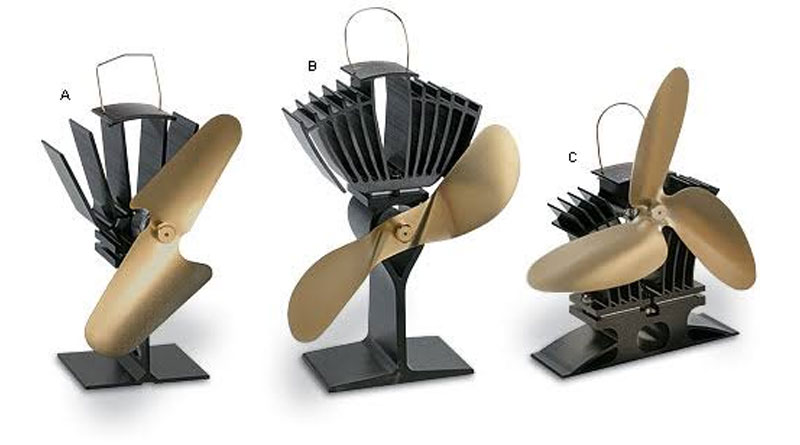How to choose a wood stove fan
Choosing a wood stove fan can be challenging when confronted with all the choices in wood stove blowers and alternative heating products. Wood stoves operate on the principal of radiant heat, meaning the material the wood stove is made out of actually store heat and radiates it into the room as opposed to fireplaces which tend to lose most of the heat they generate right up the chimney.
While wood stoves have become one of the most popular forms of alternative heating, without a wood stove fan or a wood stove blower the heat may not be distributed as evenly as what is desired. People sitting close to the stove may feel too warm, while other parts of the house will feel too cold. An electric ceiling fan will push the heat down and help distribute it to some degree, but running a ceiling fan all the time uses a lot of electricity. Electricity is expensive and, since most electrical plants generate power by burning coal, using electricity to distribute heat from a wood stove generates a carbon footprint that might be unacceptably large.
The first wood stove blowers resembled simple hair dryers and were basic electric fans positioned over a vent. The only settings available on these early wood stove blowers were “on” and “off” so they didn’t provide a lot of control over how much heat was distributed or where the heat went.
Modern wood stoves use the heat generated by the wood stove itself to move pistons in a special kind of engine that in turn makes the fan rotate and push the hot air into the room. These non-electrical engines, sometimes called “Sterling Engines” are much more energy efficient. They run on the heat generated by the wood stove itself and need no electricity. The energy cost savings from using these self-propelled types of wood blowers can is substantial especially when calculated over several seasons.
Very recently a new kind of wood stove fan has become available that attaches to the stove and runs without electricity or batteries, much like the newer fans that are part of the stove itself. These little self-generating wood stove blowers operate on something called the Peltier effect: the hotter the stove gets, the faster the fan spins. This means that constant adjustment is not necessary. The fan will spin faster automatically when more heat builds up and slow itself down when distributing the heat is not so much of an issue.
The new attachable “Eco-fans” generally sit on top of the wood stove and can dramatically impact the efficiency of the wood stove. Gains of up to 35% in heating efficiency are not unusual. What is especially nice about an attachable Eco-fan is that, unlike early non-electric wood stove blowers these little fans do not rely on blazing hot temperatures in order to move the fan blades. They are sensitive to modest temperatures and moderate temperature changes, thus reducing the amount of wood that has to be burned in order to distribute the heat around the room. So the newest type of attachable wood stove fan not only saves electricity, it saves wood too. The room stays warmer with a cooler stove because of the fuel efficiency and sensitivity of the wood stove fan.
The newer attachable non-electric wood stove blowers are available from a wide variety of retailers and run between $100 and $250 depending on the size of the fan and the materials used in its construction. Chimney fans sit on top of the chimney outdoors and help to induce a draft so a wood stove fire burns more efficiently are also available. Chimney fans do not distribute heat but do help create and maintain it. A good chimney fan uses no more electricity than an electric light bulb but is fairly expensive. A new chimney fan runs about $2,000.

